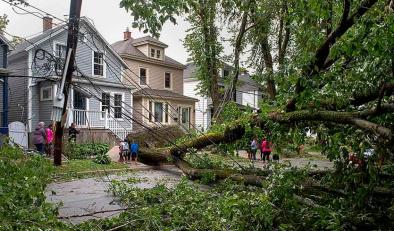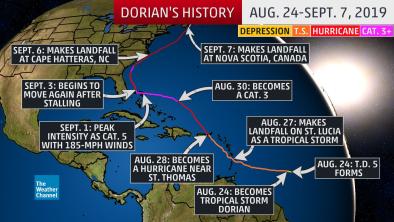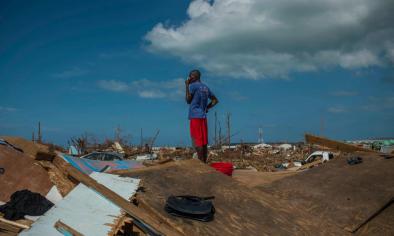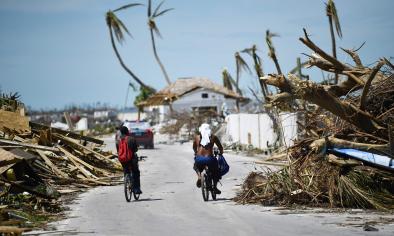A global slowdown of tropical-cyclone translation speed
Study key findings:
- Tropical cyclones have slowed by about 10% since 1949.
- Some hurricanes are moving more slowly, spending increased time over land and leading to catastrophic local rainfall and flooding.
Author quote:
Just a 10 percent slowdown in hurricane translational speed can double the increase in rainfall totals caused by 1 degree Celsius of global warming.
James Kossin, Atmospheric Research Scientist at the National Oceanic and Atmospheric Administration's (NOAA) Center for Weather and Climate
Study abstract:
As the Earth’s atmosphere warms, the atmospheric circulation changes. These changes vary by region and time of year, but there is evidence that anthropogenic warming causes a general weakening of summertime tropical circulation. Because tropical cyclones are carried along within their ambient environmental wind, there is a plausible a priori expectation that the translation speed of tropical cyclones has slowed with warming. In addition to circulation changes, anthropogenic warming causes increases in atmospheric water-vapour capacity, which are generally expected to increase precipitation rates. Rain rates near the centres of tropical cyclones are also expected to increase with increasing global temperatures. The amount of tropical-cyclone-related rainfall that any given local area will experience is proportional to the rain rates and inversely proportional to the translation speeds of tropical cyclones. Here I show that tropical-cyclone translation speed has decreased globally by 10 per cent over the period 1949–2016, which is very likely to have compounded, and possibly dominated, any increases in local rainfall totals that may have occurred as a result of increased tropical-cyclone rain rates. The magnitude of the slowdown varies substantially by region and by latitude, but is generally consistent with expected changes in atmospheric circulation forced by anthropogenic emissions. Of particular importance is the slowdown of 21 per cent and 16 per cent over land areas affected by western North Pacific and North Atlantic tropical cyclones, respectively, and the slowdown of 22 per cent over land areas in the Australian region. The unprecedented rainfall totals associated with the ‘stall’ of Hurricane Harvey over Texas in 2017 provide a notable example of the relationship between regional rainfall amounts and tropical-cyclone translation speed. Any systematic past or future change in the translation speed of tropical cyclones, particularly over land, is therefore highly relevant when considering potential changes in local rainfall totals.
Related Content






